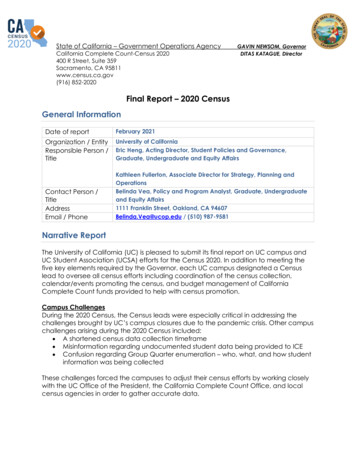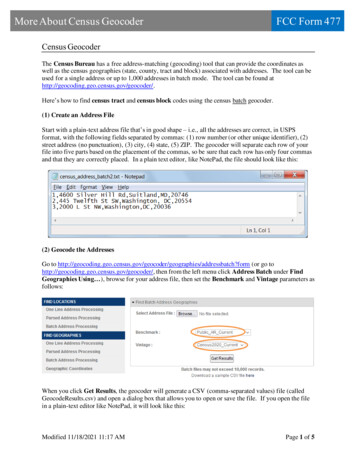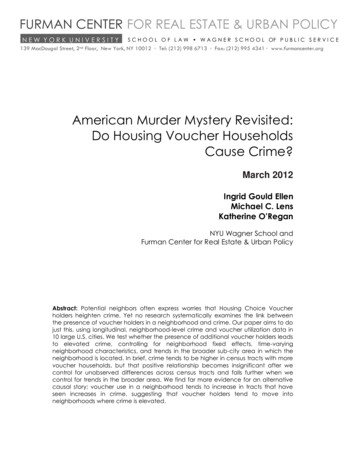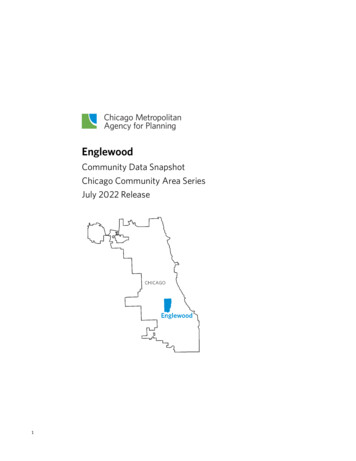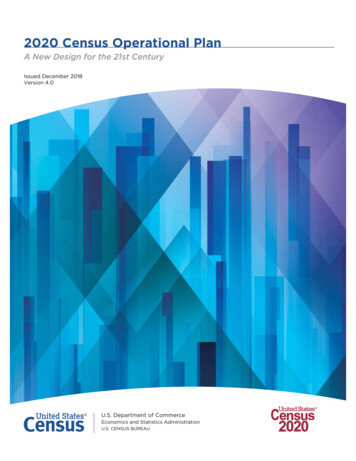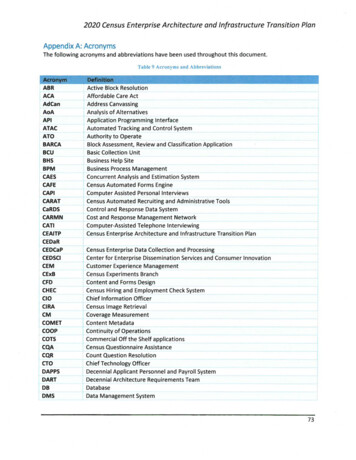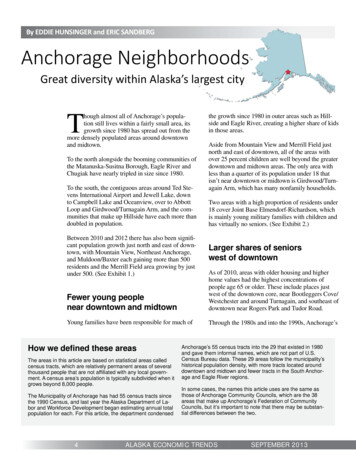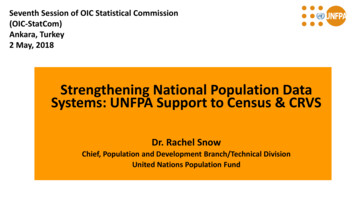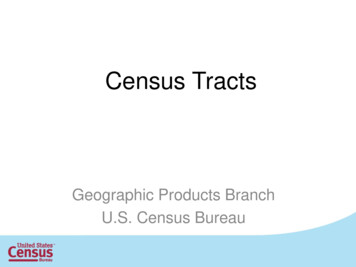
Transcription
Census TractsGeographic Products BranchU.S. Census Bureau
Overview Definition of a census tract History of census tracts How census tracts are updated eachdecade How to compare census tract boundariesdecade to decade2
Definition Census tracts are small, relativelypermanent statistical subdivisions of acounty.– Uniquely numbered in each county with anumeric code Census tracts average about 4,000inhabitants– Minimum Population – 1,200– Maximum Population – 8,0003
Map of census tracts4
History of the Census Tract1790First census18901906First delineation of small geographic areas called sanitary districtsDr. Walter Laidlaw suggested the delineation of permanent, smallgeographic areas that would retain their boundary census to census1910Dr. Laidlaw divided NYC into “districts” and asked Census to do the samefor seven other cities1920Dr. Laidlaw published data by district for NYC1930Howard Wipple became chairman of the Committee on CensusEnumeration Areas and promoted the use of census tracts5
History of the Census Tract1940The census tract became an official geographic entity for which theCensus Bureau would publish data for. Census tracts covered major citiesand block number areas (BNAs) covered many other cities19701980The number of BNAs increased and the criteria of the BNA matched thecensus tract1990Census tracts and BNAs covered the entire nation2000The BNA concept was retired and census tracts were defined nationwide.2010100th anniversary of the census tract6
Updating Census Tracts Participant Statistical Areas Program(PSAP)– Program offered once every 10 years– Local involvement in delineating statisticalareas– Census tracts are split or merged, dependingon population change– The new 2010 census tracts were released aspart of the 2010 TIGER/Line Shapefilesbeginning in December 2010.7
Updating Census Tracts Census tracts are designed to be relativelypermanent over time.– Any changes are documented so data can becompared from decade to decade. Census tracts with more than 8,000 people are splitinto 2 or more tracts and are given an extension totheir existing numeric code Census tracts with less than 1,200 people aremerged with a neighboring tract and are given anew numeric code Small boundary corrections are sometimes allowedas well.8
Census Tract Relationship Files Files that show how 2000 census tracts relate to 2010 census tracts One record per each 2000 census tract/2010 census tract spatial set– The area that is uniquely shared between a 2000 census tract and a 2010census tract Three sets of files1.2.3.Census Tract Relationship File with population and housing unitinformation and area measurement (both national and state-based files)Substantially Changed 2000 Census Tract Files (both national and statebased filesSubstantially Changed Census 2010 Census Tract Files (both national andstate-based files)13
14
15
16
17
18
19
To visualize the tract relationship files, you can useour TIGER/Line shapefiles or the tract outline PDFmaps. The TIGER/Line shapefiles can be found tml The census tract reference maps can be found athttp://www.census.gov/geo/maps-data/20
No Change21
Revision22
Merged23
Split24
Questions?Call us at 301-763-1128Email us at geo.geography@census.gov25
Participant Statistical Areas Program (PSAP) -Program offered once every 10 years -Local involvement in delineating statistical areas -Census tracts are split or merged, depending on population change -The new 2010 census tracts were released as part of the 2010 TIGER/Line Shapefiles beginning in December 2010. 7


